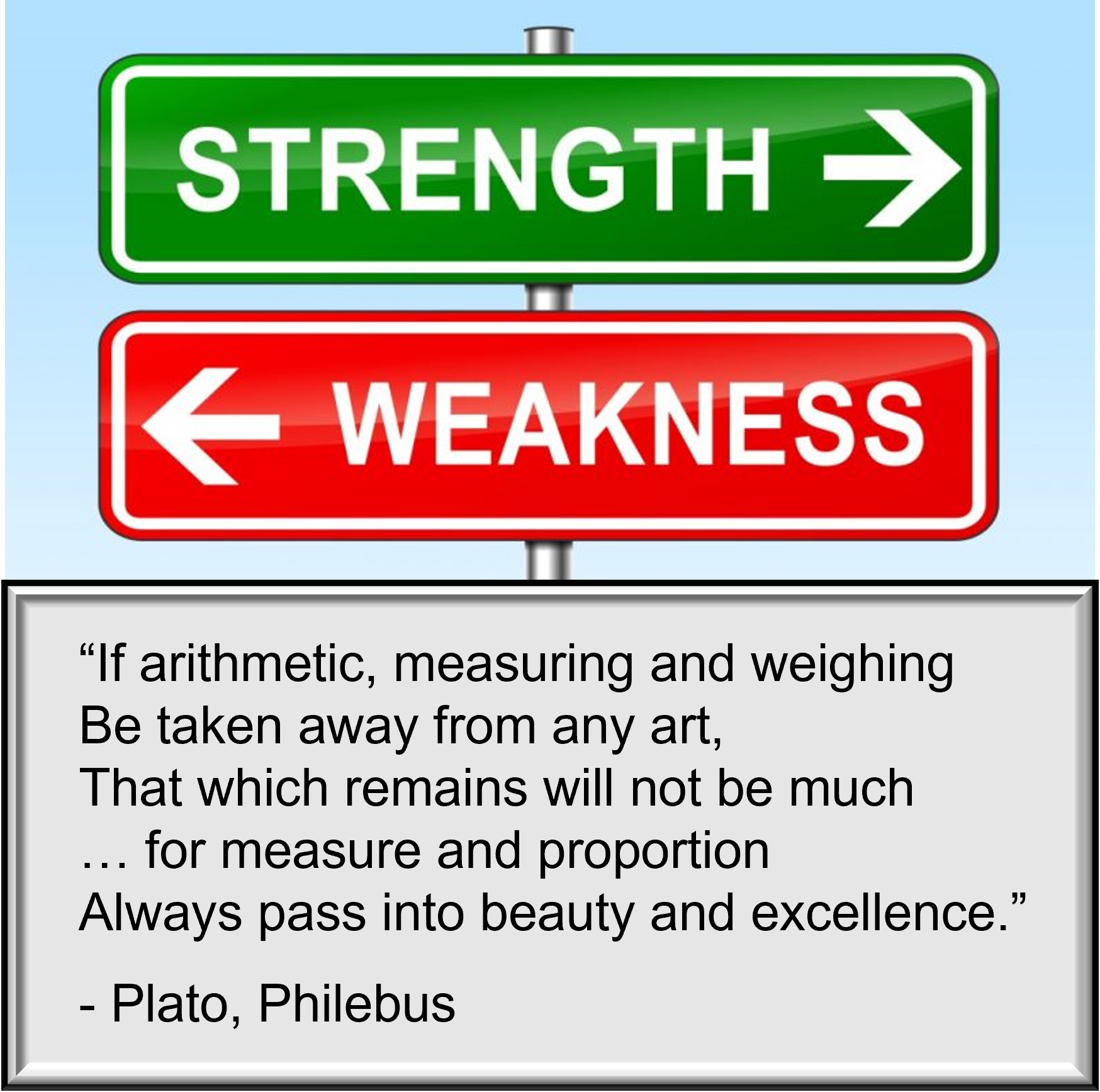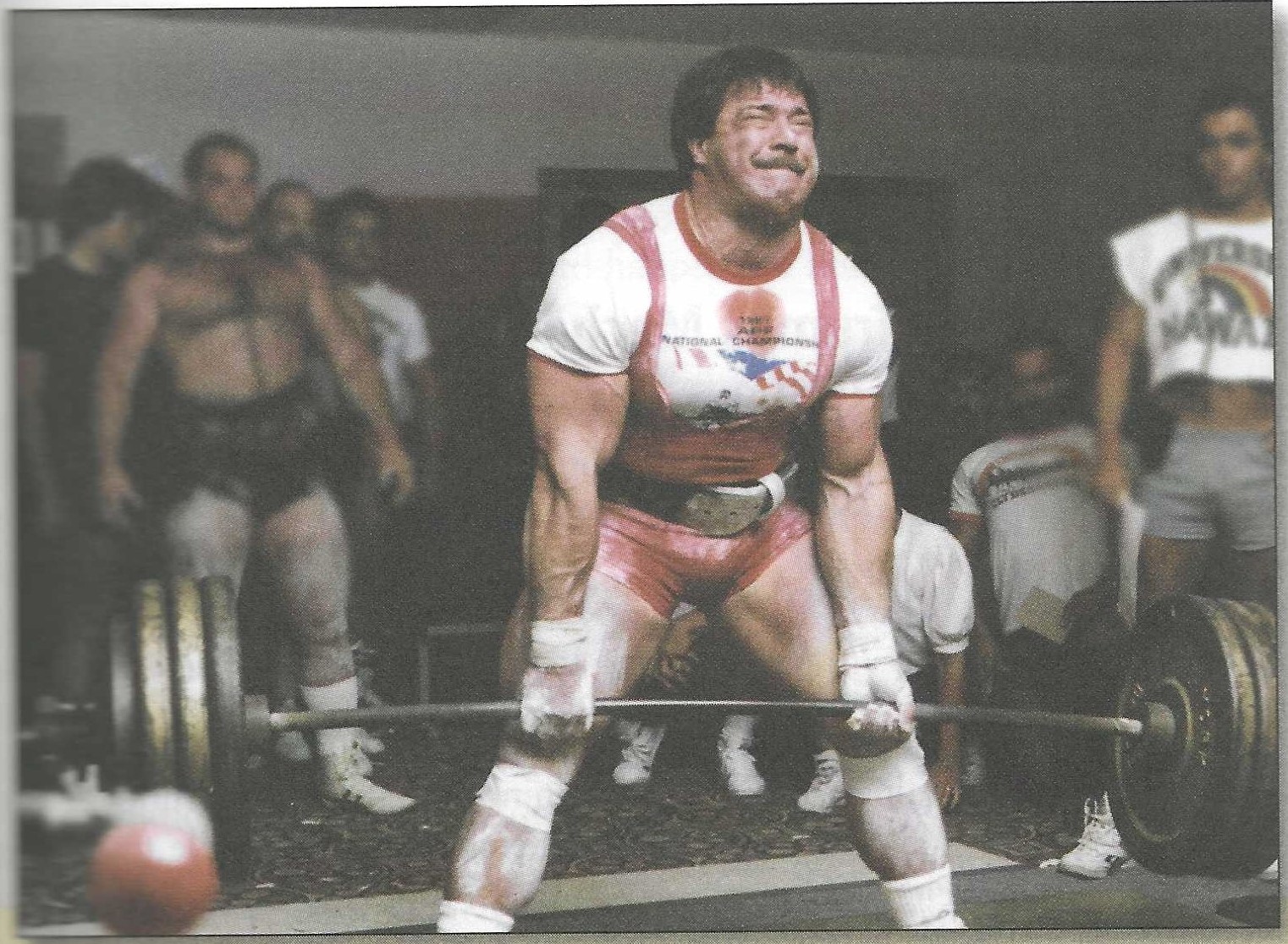
What's the toughest lesson to learn in all of fitness-dom?
Prioritizing weaknesses & not continually playing to our strengths.
Let's loop back around to human nature: the reason we are strong in certain areas and weak in others relates directly to bias, preference and enjoyment. We all have our likes and dislikes and we seek to repeat experiences that we perceive as pleasurable. We avoid things and experiences we perceive as dreadful. In our fitness efforts we are inclined to repeat that part of the transformational process we perceive as pleasurable. Perhaps we love a particular cardio mode, like tennis. We get up at 5:00am year round and go to the local tennis club and play for a solid hour with other tennis fanatics; all before the rest of the world is even awake. I know such a collection of tennis fanatics exists because I used to see them flailing away first thing in the morning as I passed the windows overlooking the indoor courts at the posh club where I used to train. I would be on my way to train with like-minded group of weight training fanatics.
That which we perceive as pleasurable causes us to make great sacrifice in order to squeeze the pleasurable activity in our hectic and harried life. Often our training preferences, taken to an extreme, will result in physical disproportionality. We train a certain muscle or group of muscles to such an extent that our physiques become physically unbalanced and asymmetric. If a person loves to do curls and does them often, after a number of years those biceps are going to become proportionally larger than other muscles neglected during that same time period.
Maybe you love a particular cardio activity and despise resistance training. You avoid any and all muscle strengthening - then hurt your back picking up a forty pound child. Perhaps you can bench press 400 for reps, but cannot walk up a flight of stairs without getting totally out of breath. Maybe you are diligent at weight training and love cardio, but have zero control over the knife and fork. You end up very strong, extremely fit (in a cardio sense) and obese, all at the same time. The NFL is loaded with this type of athlete, 350 pound offensive tackles that can bench press a house, run a marathon (albeit not very fast) and still are clinically obese. The point being, we all have our fitness preferences and dislikes.
Likely the areas on your physique that need improvement are developed using modes, techniques or tactics you don't particularly like. Working on weak points is the absolute fastest way to make physical improvement. A weak point is likely to be at 50% (or less) of total genetic potential. When you mount a serious effort to bring up a weak point, the room for improvement is vast.
Factually, that hypothetical athlete who loves to curl would find that if suddenly he devoted as much time and effort to a bodily weak point (say his bird-thin legs) as he has on his over-developed arms, huge physical improvement would be realized and realized quickly. He could add two inches to his under-worked, underdeveloped legs in a matter of months. It would take years to bring his arms up that much because he is likely already at 90% of his arm growth potential.
Logic dictates a continual shift in the training emphasis: the wise man goes from one under-developed body part to the next, until every muscle and muscle group on the body is uniform and proportional. But that's logic and humans are not robots.
If you want to make progress at a neck-snapping, head-spinning rate, look at the Purposeful Primitive Training Triad and with a cold hard eye identify your particular weak points. Then draw up an eight week battle plan that specializes on weak aspects of your game. If you're strong as a gorilla, but fat as a pig, then eating is your weak point. Your food selections and quantities are undercutting the rest of your efforts, so focus your energy on disciplined nutrition.
If you are doing way too much cardio and zero weight training, get down to some serious iron pumping. Habit force is a bitch to overcome, but fighting against our basic preferential human nature is the way of a champion. If we always and forever do that which we love, ignoring things we don't, then we are digging a deep, deep trench that becomes nearly impossible to overcome or escape. See a hypothetical beginner cycle below.
8 Week Beginner Plan
The hypothetical individual is male: He stands 5'10", weighs 200 with 20% body fat and would like to shed 10 pounds in eight weeks - a realistic goal. As a total beginner with limited time to weight train a twice a week training regimen concentrates on doing three powerlifts to exclusion. The three lifts are performed in two 30 minute weekly sessions. We project and track five inter-related categories: bodyweight, bench, squat, deadlift and cardio.
Beginners should warm up with 50% of the day's top poundage on the 1st warm up set. 75% on the second warm up set. The third set is the 100% top set weight. The cardio column lists the length of each cardio session and the frequency; how many aerobic sessions are performed each week. The goal for the first four weeks is to lose two pounds a week and then one pound a week for the final four weeks.

People who do the same thing for too long become fossilized and incapable of change. Progress and change are synonymous. Without change, without subjecting the body to new and different tests and stresses, nothing of any physical consequence will occur. The human body does not favorably reconfigure itself in response to sameness. Identify weak points and give them priority. This is the toughest of tasks, but the one with the most growth potential. Play to your weaknesses, not your strengths.

Work the weak points: Pat Brago's face captures the degree of pure physical effort required to trip the hypertrophy switch. He is willing his body to exceed what he is actually capable of. Pat demonstrates the top pull position in this 750 pound Sumo deadlift. His weak side lags slightly. The deadlift was Pat's weak point. By prioritizing weaknesses and not continually play to his strengths, he ultimately achieved physiologic balance. The blood stain on his t-shirt occurred when he pushed so hard on his third attempt squat that the membranes inside his nose exploded and shot blood out in projectile fashion.
Do you have to train so hard your nose explodes? No, but Bragos facial expression alerts you to the degree of effort the top men exert on the final reps of a top set.
Learn more about our signature techniques in the posts below.
Learn more about our philosophies check out our site Functional Strength. Join the community sign up below to either our FREE Ecourse or FS Newsletter or both. If you sign up for the newsletter you will receive our FREE Planning and Periodization Guide. Please feel free to send us a question here or leave a comment below.
Cut Through The Training Confusion!
Learn how to create a Transformative Plan using our FREE Step-by-Step E-Course. Create your own personalized Transformative Template whether a new or experienced trainee merging your progressive resistance, cardio and nutrition goals!
Want the inside training scoop?
Join The Community
Our email content is full of value, void of hype, never pushy, and always free. As a BONUS you will receive our FREE planning & periodization template to help you with your training goals.






